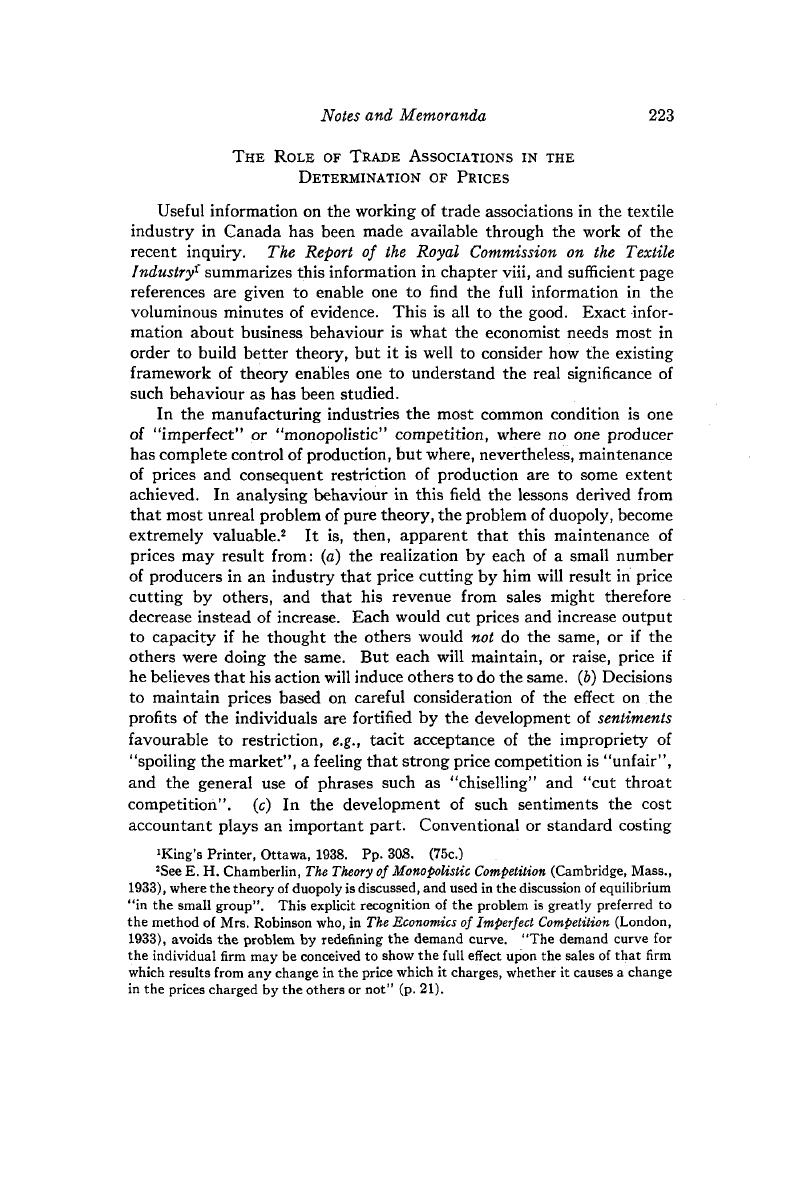Published online by Cambridge University Press: 07 November 2014

1 King's Printer, Ottawa, 1938. Pp. 308. (75c.)
2 See Chamberlin, E. H., The Theory of Monopolistic Competition (Cambridge, Mass., 1933)Google Scholar, where the theory of duopoly is discussed, and used in the discussion of equilibrium “in the small group”. This explicit recognition of the problem is greatly preferred to the method of Mrs.Robinson, who, in The Economics of Imperfect Competition (London, 1933)Google Scholar, avoids the problem by redefining the demand curve. “The demand curve for the individual firm may be conceived to show the full effect upon the sales of that firm which results from any change in the price which it charges, whether it causes a change in the prices charged by the others or not” (p. 21).
3 Report of the Royal Commission on the Textile Industry, p. 144.
4 Ibid., p. 139.